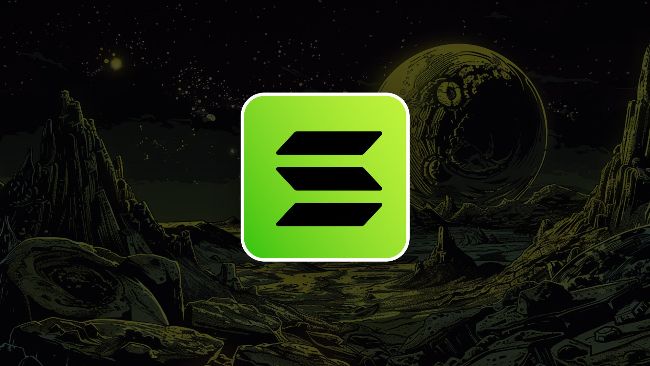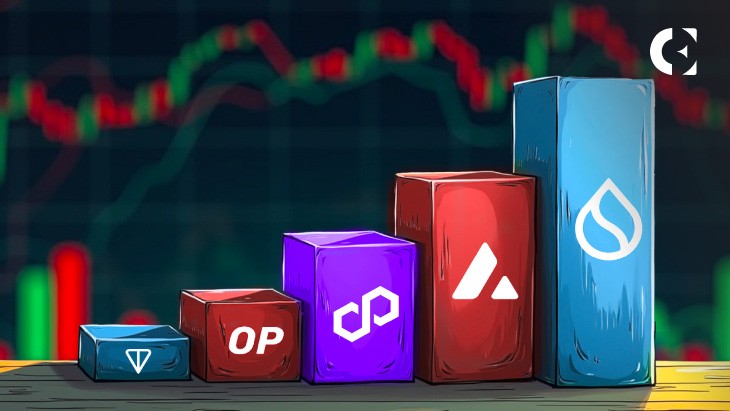Decentralized finance has long been synonymous with the Ethereum blockchain, but the world’s first smart contract network no longer has the market in such an iron grip. In the last few years, a new generation of faster, more performant blockchains like Solana, Radix, and Sui have emerged with competing DeFi platforms, leading to the rise of a more vibrant ecosystem.
However, Ethereum’s biggest challenge in DeFi may not come from those pretenders, but a much older stalwart in the blockchain industry. That would be none other than Bitcoin, which is nurturing a still small but rapidly growing DeFi industry of its own.
Bitcoin-based DeFi has already enjoyed substantial growth, with DeFilama estimating that the total value locked in BTC-friendly protocols rose to a high of $6.6 billion at the end of February, up from just $307 million in January 2024.
Where did Bitcoin DeFi come from?
For a long time, it was thought that Bitcoin-native DeFi simply wasn’t possible, due to the lack of a suitable architecture to support smart contracts. To use Bitcoin in DeFi, the only way was to deposit BTC with a custodian such as BitGo in order to mint a different asset, called “wrapped Bitcoin” or wBTC, on the Ethereum blockchain.
The value of wBTC is pegged to that of Bitcoin, and it’s compatible with any DeFi protocol on Ethereum, but the reliance on a custodian was a deal-breaker for many people, as Bitcoin is all about decentralization.
That’s why innovators such as Rootstock, Stacks, and Liquid Network pushed to create an alternative, developing Layer-2 networks that bring advanced, smart contract capabilities to Bitcoin-native assets. These networks make Ethereum-like DeFi possible for BTC holders, expanding its utility from a simple payment mechanism and store of value into a programmable and yield-generating asset, much like altcoins such as ETH, SOL, and DOT.
For instance, protocols like Babylon enable users to stake BTC, locking their coins into a smart contract. The idea is to use the staked BTC as collateral to secure third-party proof-of-stake blockchains, and in return, depositors can earn rewards in the native assets of those networks.
What’s special about Bitcoin DeFi?
Bitcoin DeFi holds enormous potential for two main reasons: First, it promises to unleash enormous liquidity into the DeFi ecosystem, unlike anything we’ve seen so far. That’s because Bitcoin remains by far and away the most valuable digital asset, with a total market capitalization of more than $2 trillion, making it more valuable than every other cryptocurrency combined.
If Bitcoin DeFi takes off, it will open the floodgates for billions of dollars of value to flow into the DeFi ecosystem, creating incredible opportunities for Bitcoin holders.
Second, people are excited about Bitcoin DeFi due to its security benefits. Quite simply, Bitcoin is the most secure blockchain protocol around, and in its 16-year history, it has never been hacked or been taken offline. That’s in contrast to other DeFi networks, like Solana, which famously suffered a five-hour outage back in February 2024, frustrating thousands of DeFi users and causing many to miss opportunities.
Bitcoin’s highly resilient network can provide a rock-solid foundation on which to build DeFi applications, making it very appealing to institutions.
One way of doing this is to make use of SatLayer’s Bitcoin Validated Services, which extend Bitcoin’s security to dApps in a similar way to how Actively Validated Services allow developers to tap into the security of Ethereum.
With SatLayer, developers can leverage BTC as collateral for a range of dApps and services, including data oracles that provide price feeds to Bitcoin-based DeFi protocols, cross-chain bridges, which ensure compatibility between Bitcoin and other networks, and data availability layers, which provide a more efficient way to store and access blockchain data.
Traditionally, such dApps would have to build their network of validators, but with SatLayer’s BVSs, they can tap into a ready-made validator set. Each BVS is secured by restaked capital from SatLayer users, who can earn significant rewards for depositing collateral.
SatLayer utilizes a combination of on- and off-chain mechanisms to incentivize good behavior from validators and punish those who misbehave. One of these is slashing, which allows protocols to take away the restaked collateral if the validator tries to cheat. This acts as a strong deterrent that promotes honest behavior, and there are further incentives for validators to keep a watchful eye on each other.
With its BVS-based security for dApps, SatLayer is building a new economic layer on Bitcoin that unlocks programmability for the world’s best-known digital asset. It’s building a system where Bitcoin can emerge as a key primitive for DeFi and real-world assets, flooding liquidity into the ecosystem and providing immense value for Bitcoin holders.
Why is Bitcoin DeFi taking off?
Bitcoin has gotten a lot of renewed interest from traditional financial institutions in the last year, with the approval of the first Bitcoin exchange-traded funds helping to drive a sharp increase in BTC’s price. Last December, the value of Bitcoin topped $100,000 for the first time, generating even more excitement and encouraging many more people to invest.
We’ve also seen a number of popular cryptocurrency exchanges start offering Bitcoin DeFi services, including the likes of Binance and OKX, which have integrated Bitcoin staking.
Add to that the growing variety of DeFi opportunities on Bitcoin. There are several Bitcoin DeFi ecosystems, with one of the leading ones being Stacks, a separate blockchain that settles transactions on Bitcoin using the proof-of-transfer consensus mechanism. Stacks supports smart contracts and serves as a platform on which developers can build dApps, just like Ethereum. Users can swap BTC for sBTC, a token that’s pegged to Bitcoin’s price but doesn’t use custodians. With sBTC, they can engage in a range of yield-generating activities, such as providing liquidity for crypto exchanges and collateral for loans.
Rootstock is a sidechain that employs merge-mining to link itself to Bitcoin. It uses an Ethereum-compatible virtual machine to support dApp development, and BTC can be locked in smart contracts to mint rBTC, another Bitcoin-pegged asset. Another popular Bitcoin DeFi protocol is Sovryn, which allows for native BTC to be used in activities such as margin trading and lending. It has also launched Bitcoin-backed stablecoins, such as DLLR and DOC.
Yet more Bitcoin DeFi platforms include Liquid Network, Merlin Chain, ALEX, Taproot Assets, and BitVM.
Perhaps the biggest selling point of Bitcoin DeFi is the fact that Bitcoin remains the undisputed king of crypto. There’s never any shortage of demand for Bitcoin, and it continues to stand head and shoulders above all other digital assets. Bitcoin-based DeFi protocols can offer their users the chance to earn real BTC as yield, giving investors exactly what they want – more Bitcoin.
What does the future hold?
Bitcoin is still a very small part of the overall DeFi ecosystem, but it’s also maturing very quickly. The first Bitcoin-based DeFi protocols were just experiments by developers seeing if it was even possible, but those ideas have metamorphosed into a robust ecosystem made up of Layer-2s, sidechains, and dApps.
Thanks to DeFi, Bitcoin now has utility that many said would never be possible, and although challenges persist in terms of scaling the ecosystem, it continues to make rapid progress.
For Bitcoin-based DeFi to catch and surpass the likes of Ethereum and Solana is a tall order, but crypto is an industry that rarely goes backwards. As more innovation occurs and more users jump in, DeFi will continue to expand the utility of the world’s top crypto asset.













Leave a Reply